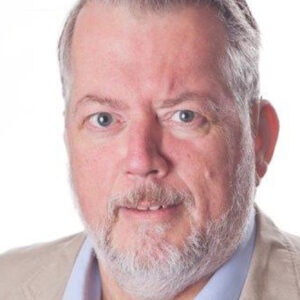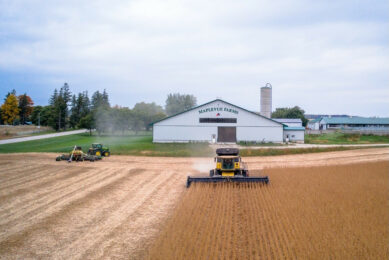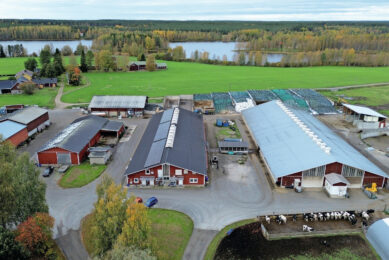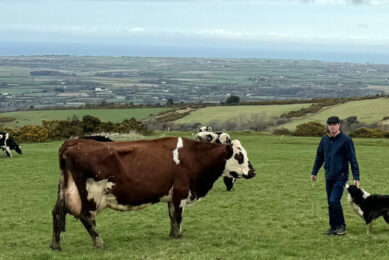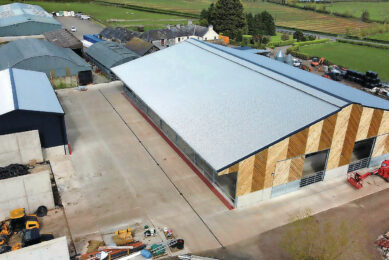Swedish dairy farmer goes for a profit of 10%
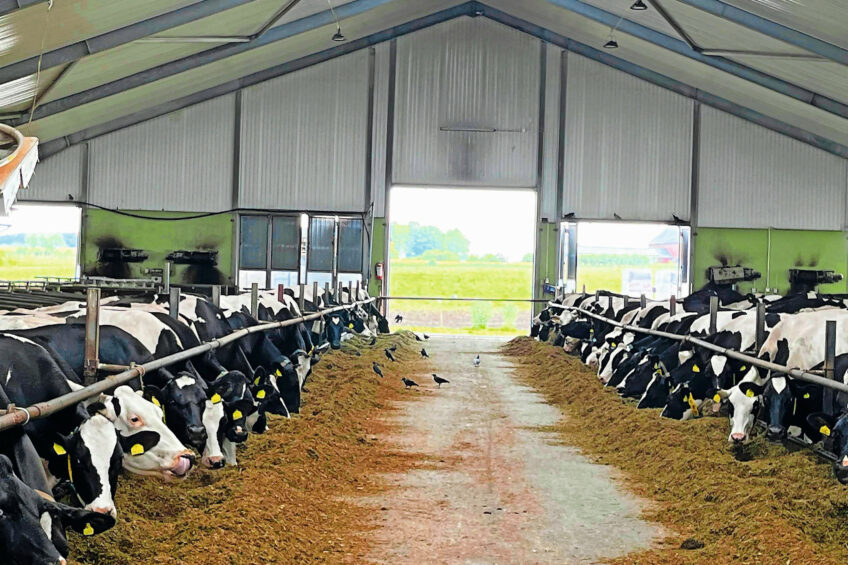
Swedish farmer Anders Christenson has a permit to increase his herd from 300 to 500 dairy cows. Financing is not an issue, but with no successor in sight, he has some doubts.
Christenson’s dairy farm in Falkenberg, 100 km south of Gothenburg in Sweden, is tranquil. There is plenty of feed at the feed fences, and the calves lie calmly in the straw in the igloos in a new calf barn. In just a few hours there will be activity again. At 10 pm, 2 employees will start milking the 240 lactating cows in the 2×10 rapid exit.
The Swede milks the cows 3 times a day in the milking parlour that was built in 2001. Behind the milking parlour there are 240 cubicles in the 3+3 stable.
“We work with a maximum of 10% overcrowding of the boxes. This is not a problem in the summer because the cows are outside,” said Christenson. The boxes are equipped with mats, which are thickly bedded with sawdust. A chain with scrapers transports the manure every hour to a storage unit outside the barn.
Dry cows and young cattle from about 4 months of age are housed in a freestall. After birth, the calves are kept for 4 months in the barn located between the 2 freestall barns. The barn for the youngest animals has igloos in a row on either side of the raised feeding alley.
Too many young cattle
The company milks around 240 cows, which means just under 280 dairy cows including dry cows. There are more than 310 young female cattle and almost 60 bulls. Why so many young cattle? Is it not profitable to sell pregnant heifers? “There is hardly any domestic demand for breeding cattle, and our mastitis situation is a handicap for exports,” says Christenson. “Not that there are many cows with mastitis. However, Streptococcus dysgalactiae is lurking among our cows so buyers are not interested.”
Farm expansion
At the end of 2021, Christenson obtained a permit to expand to 500 cows. “We don’t have a waiting area, and that limits the capacity of the parlour,” he explains. “Then you start calculating, and ultimately that led to a plan for 500 dairy cows through an extension of the freestall barn. The permit was issued quickly.”
Not surprisingly, the war in Ukraine has increased the the cost of building materials considerably. “The stable would have cost around €5,000 per cow, but that quickly rose to almost double, so I decided to wait.”
In the run-up to the proposed expansion, significantly more young cattle were retained. Until 2020, he had around 0.85 young cattle per dairy cow, and in recent years this ratio has risen to around 1.1. This leads to accelerated shedding of dairy cows. As a result, the replacement percentage has increased from 38% to 48%. “Now very healthy cows with a daily production of more than 35 kg go to the slaughterhouse. That costs money, despite the high meat prices in Sweden. Because at that high production, the kgs are not yet on the cows.”
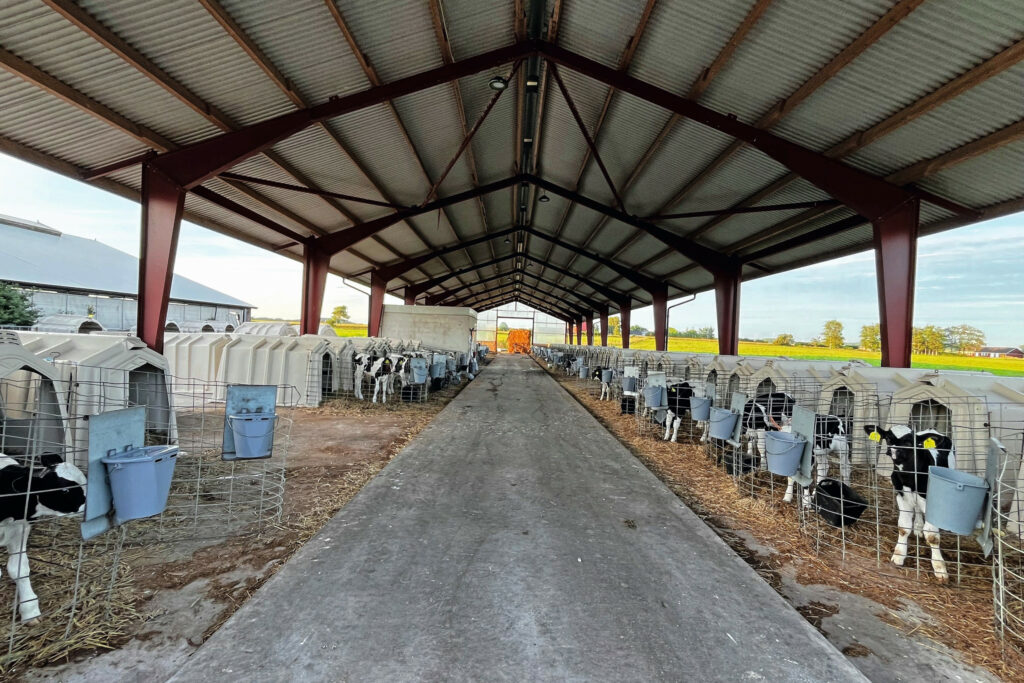
Decision needed
“After deducting all costs, I am aiming for a return of 5-10% of annual turnover.” That is roughly €100,000 to €200,000. “I only made a small loss in 2016 and 2018 – in 2016 due to the extremely low milk price, and 2018 was an extremely dry year, which meant I had to buy a lot of feed.”
To achieve his goals, Christenson has even administratively split his company into 3 parts: feed production, cows and overhead. “By allocating costs in this way and selling internally at market price, you know where margins are made and where they lag behind.”
In 2023, he also only achieved a profit of barely 2%. “But I consciously aimed for that. The yard and the silage silos were asphalted for €80,000 and we purchased 2 electric cars. All those investments were written off in one year.” Due to the accelerated write-offs, mechanisation costs have increased by almost €3 per 100 kg in 2023 to €9,94 per 100 kg in 2024.
Part of the profit flows back to the employees. “If I do well, they get a bonus.” This is also evident from his EDF figures. Christenson pays his employees €26.50 per hour, which is 14% above the average for Swedish EDF companies.
He now has 3 choices: continue with about 280 cows, construct a new building for 200 cows and grow to 500 cows, or make internal adjustments and grow more slowly. All options are financially feasible. The profit is structurally good. The company has been financed for €2 million, approximately the value of livestock, buildings and machines. About half of the loan carries an interest rate of 1.5% until mid-2026. The other half is on variable interest and is now 4.7%. “Going for a fixed rate turned out to be a good choice.”
Farm adjustments
Two groups of 60 cows can easily be created on one side of the stable. With 2 milking robots, this can quickly generate cashflow at relatively low costs, then a large part of rearing young cattle will have to be outsourced to third parties until there is room for the animals again on the farm. “Switching completely to milking robots now would destroy capital, and milking for more than 3×3.5 hours is undesirable for retaining and attracting employees.”
If the farm expands to 500 cows with a new barn, the option to switch completely to milking robots is on the table. “That would mean labour savings. I think we can run the company with 500 cows with the current employees.” Most of the employees have been with the company for more than 10 years, and they contribute to the decision-making process.
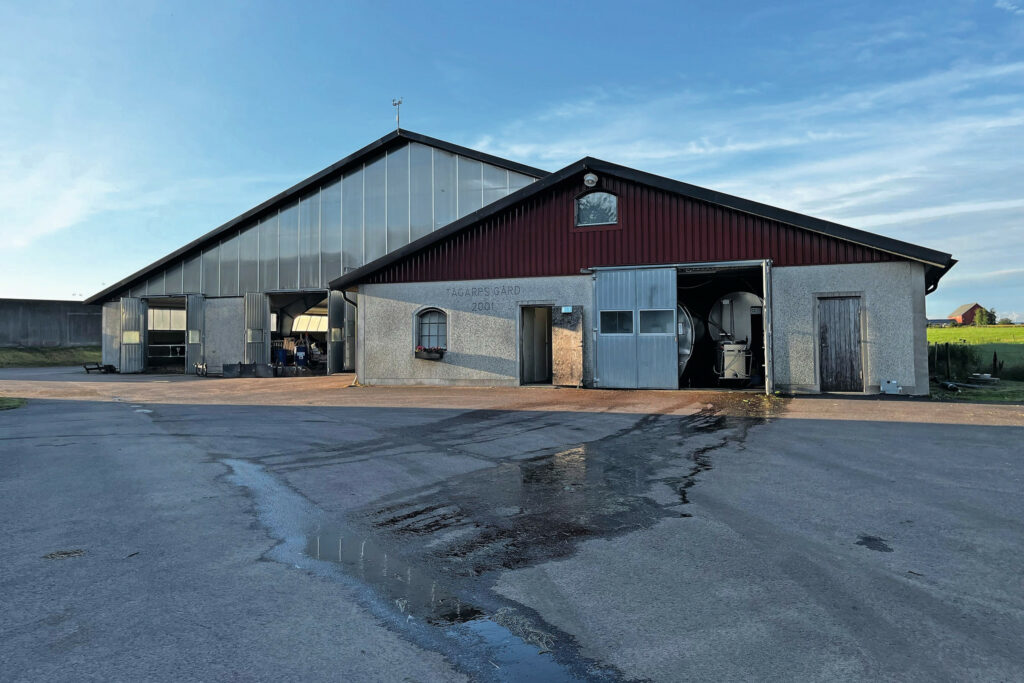
Crop yield for feed
Christenson expects major problems with feeding soya in the long term. To get more protein from his own land, he sowed a 10-hectare plot with alfalfa in 2023. “The first year there was nothing at all, hardly any yield because it was much too wet. This year things seem to be going better.”
A TMR ration is fed all year round. The cows must graze for 6 hours a day, 120 days a year. The dairy cows have a 2-hectare plot next to the barn. The young cattle have a range of 5 hectares. The only requirement is that at least 80% of the plot is green.
“If I lived 100 km north, 6 hours a day would be enough for 90 days. And in northern Sweden, 60 days is already enough.” Christenson is concerned that stricter requirements regarding grazing will eventually be introduced. “It’s not really feasible for us; we have too little grassland around the buildings. And we have no experience with grazing cows.” He also much prefers corn. “Then a stable ration is possible,” he noted.
In the winter period he feeds 10 kg of dry matter from silage maize, and 5 kg in the summer period. He supplements this with grass silage, distillers grain, wheat, beet pulp, soy meal and rapeseed meal. Straw is also added to the TMR for dry cows and young cattle. The distillers grain comes fresh from a local brewery twice a week. “It has become considerably more expensive, but it is a tasty product that stimulates feed intake. I don’t want to cut back on that.” The feed efficiency is top: 1.59. “Even higher is feasible, but then you will suffer too much in terms of the cows’ condition.”
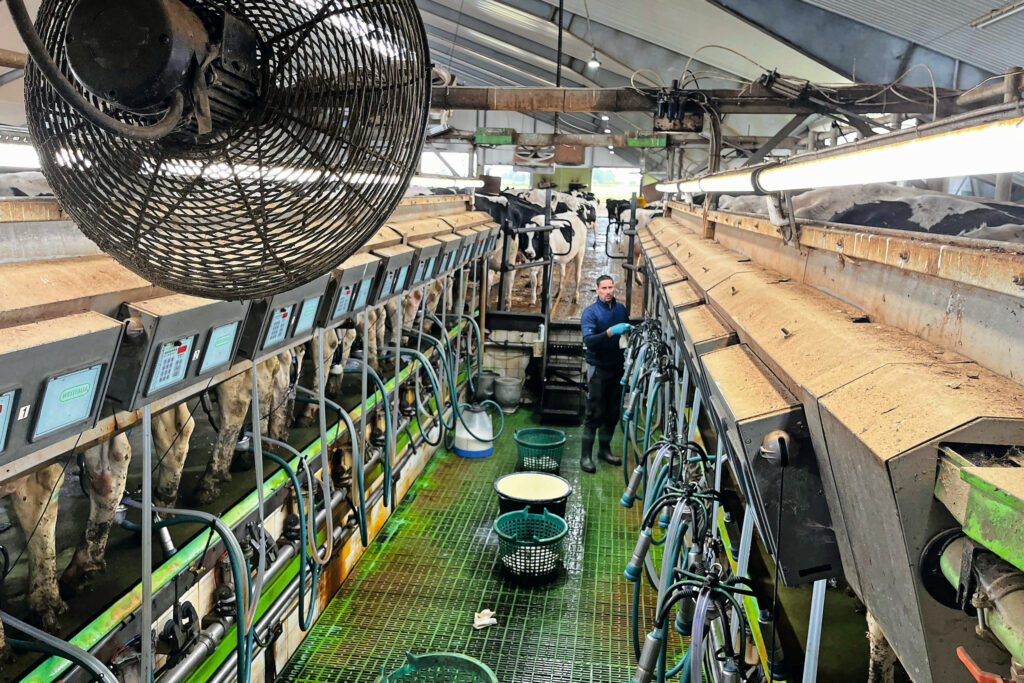
Christenson performs virtually all of the land work in-house. He only outsources the silage maize sowing, seeding and spraying of grains, combining this work with a neighbouring arable farmer. “We had to buy a new seeder and started doing the maths. He does it cheaper than we can.”
The farm plan includes 40 hectares of wheat which Christenson feeds to the cows. In 2023, the harvest was very disappointing due to heavy rainfall, and this season, Christenson is concerned about whether he will get a good enough yield.
He bought the last new tractor in 2004. The 3 newest tractors were built in 2011 and bought second-hand. “You can easily reduce mechanisation costs without sacrificing quality and safety,” he said.
Christenson is not keen on purchasing land. “Land here costs between €20,000 and €25,000 per hectare and you can rent for €350. We have 4 cuts of grass, which is 11 tonnes of dry matter per year. We obtain 15 tonnes of dry matter from silage maize. You can usually buy grains cheaper than growing it yourself.”
He measures the contents of the slot silos and carefully records what goes into the feed mixer. The livestock farmer can use 170 kg of nitrogen from animal manure per hectare and supplement with 130 kg of nitrogen from fertiliser and fertiliser substitutes.
“We have to dispose of manure, approximately 3,500 cubic metres per year. We supply this to a biogas plant free of charge. We get twice as many kgs of nitrogen in return as fertiliser substitutes,” he said. That does require storage capacity. The company has 3 large manure silos with a capacity of over 10,000 cubic metres. “If we expand, one of the conditions is that these silos are covered. This does provide additional manure storage, because more than 1 metre of rainwater per year now goes into the silos. The nitrogen content of the slurry is only 1.9 kg per cubic metre.”


